Nanex Research

Nanex ~ 20-Dec-2013 ~ Fantaseconds
Back on September 20, 2011, we coined the term fantaseconds to describe the phenomenon
of trades printing ahead of quotes. We wrote
this paper which included ample evidence of fantaseconds in the stock of Yahoo. What many readers of the paper didn't
realize at the time, was our suggestion that somehow high frequency traders figured
out how to go faster than light, was satire. It didn't help that just hours later, CERN
announced the possibility that they detected particles travelling faster than light, and
many people conflated the two stories.
Fantaseconds only exist because of how exchanges are sending data to (at least)
2 different
feeds: their pricey direct feed (up to $60,000/month from just one of 14 exchanges)
and the SIP (also called the consolidated feed). To further complicate matters, quote data
(top of the book orders from each exchange) and trade executions are sent to 2 different SIPs (the quote
SIP and the trade SIP). When quote data sent to the quote SIP gets delayed relative
to the same data sent to direct feeds, then we will see fantaseconds:
the phenomenon of trade executions printing before quotes from one exchange. However,
if regulations are being followed, we should never see fantaseconds. In other words:
Fantaseconds are evidence of an illegal direct feed speed advantage.
It is important to understand that Reg. NMS clearly prohibits exchanges from sending
quote and trade data faster to direct feeds than to the SIP. This crucial because the
SIP forms the heart of Reg NMS, and allowing direct feeds a speed advantage would negate
much of the reasoning behind other rules in this landmark regulation. Perhaps the regulator
- the SEC - said it best in the the
language used about the importance of the SIP when they imposed a historic $5
million fine against the NYSE for providing a direct feed speed advantage:
When Congress mandated a national market system (“NMS”) for trading
securities in 1975, it emphasized that consolidated data “would form the heart of
the national market system.” The Commission since has emphasized the importance
of the consolidated data feeds on many occasions, including in its January 2010
Market Structure Concept Release: “As a result, the public has ready access to a
comprehensive, accurate, and reliable source of information for the prices and volume
of any NMS stock at any time during the trading day. This information serves an
essential linkage function by helping assure that the public is aware of the best
displayed prices for a stock, no matter where they may arise in the national market
system.” In addition to providing the view of the market for many investors, consolidated
data feeds also play an important role in price discovery and compliance functions.
For example, a number of exchanges and other trading centers use the consolidated
feeds to check prices at other trading centers to determine whether they may execute
an order or whether another trading center has a better price.
Read more about the NYSE fine here
and here.
A few seconds after 15:50:00 on
December 20, 2013, we witnessed record level fantaseconds
(6+ seconds) occurring
in many stocks - a large number occurred in Nasdaq listed stocks beginning with
the letter 'A'. Below are just 2 examples out of hundreds. It is important to understand,
that cases of fantaseconds are not isolated events. It's just that they can't always
be detected. We should never see them at all, and when we do, it's because
of a fundamental mechanism deep in exchange network architecture, that (illegally) favors
direct feeds over the SIP.
Example 1. The stock of Activision Blizzard, Inc (symbol: ATVI, market cap: $12
billion).
1a. ATVI - Quote spread (gray shade) from Nasdaq
Note the 6 second gap, followed by a burst of quotes. This is the queue emptying out
immediately, and new (incorrect) timestamps being applied to these old quotes.

1b. ATVI - Quote spread (gray shade) and trades (dots) from Nasdaq.
Although quotes stopped updating on the SIP, trading continued.
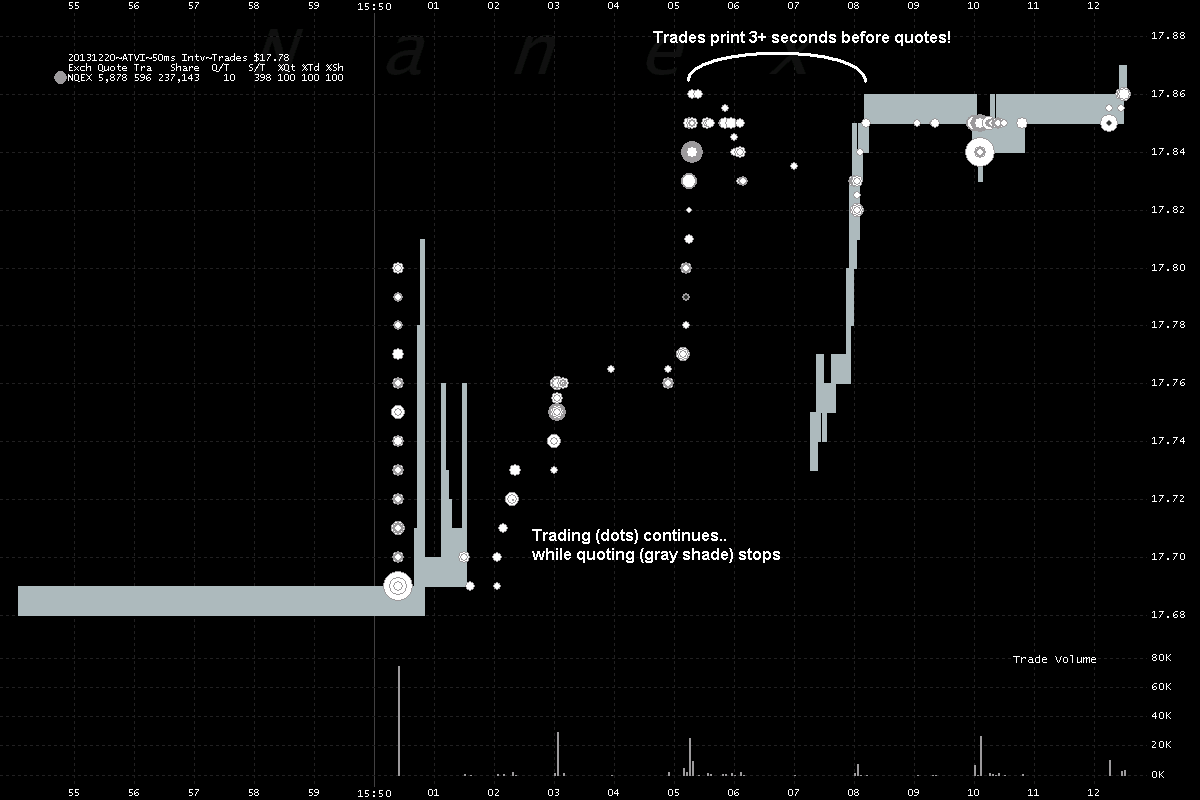
1c. ATVI - Quote spread and trades from BATS (pink) and Nasdaq (gray).
You can clearly see how Nasdaq quotes are offset in time from BATS quotes. This tells
us the queue wasn't internal to the SIP, because if the SIP was delayed, then quotes
from all exchanges would be delayed.
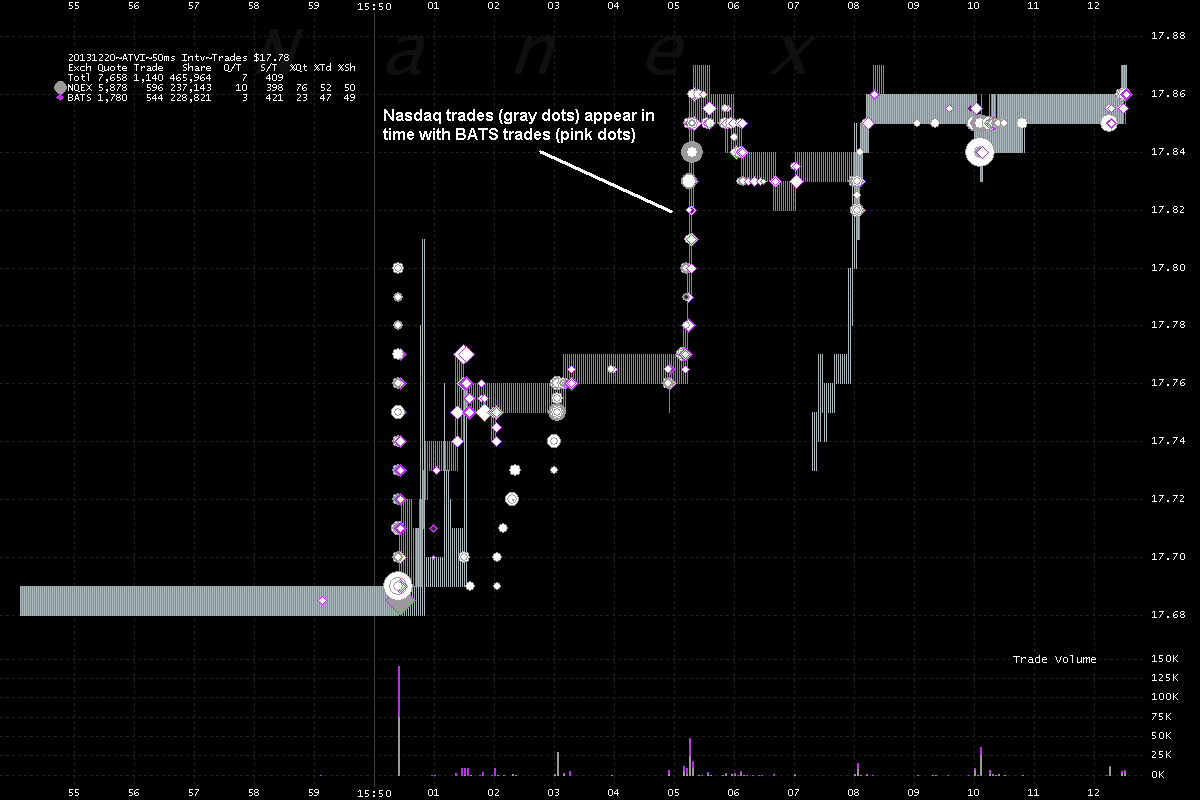
1d. ATVI - Quote spread from BATS (pink shade) and Nasdaq (gray shade).
It's easier to see the Nasdaq quote delay in this view.
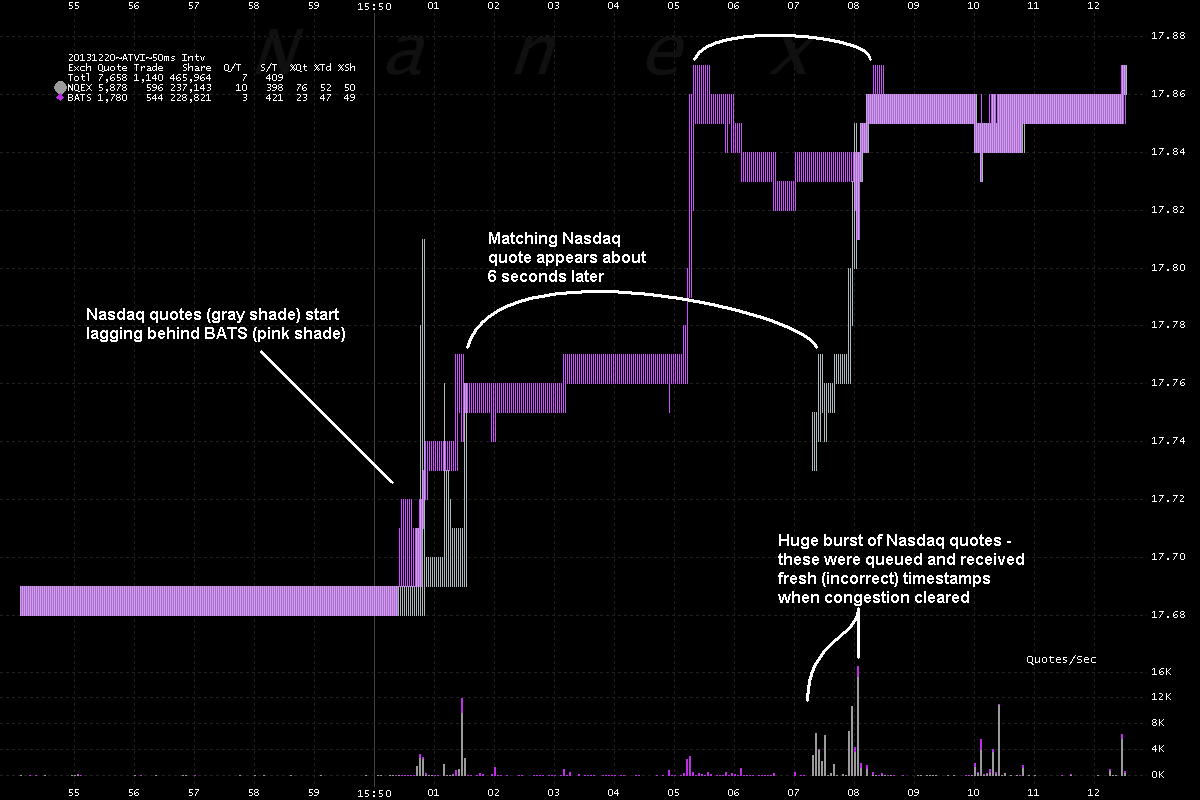
1e. ATVI - trades from all exchanges and NBBO (shaded gray for normal, red for
crossed).
The NBBO is crossed because of the stale $17.74 offer (ask price) from Nasdaq is lower
than bids from other exchanges.

Example 2 - The stock of Associated Banc-Corp (symbol: ASBC, market cap: $2.8 billion).
2a. ASBC - quote spread (gray shading) and trades (dots) from Nasdaq.
Quotes stop for at least 6 seconds (gap in shading), while trades continue.
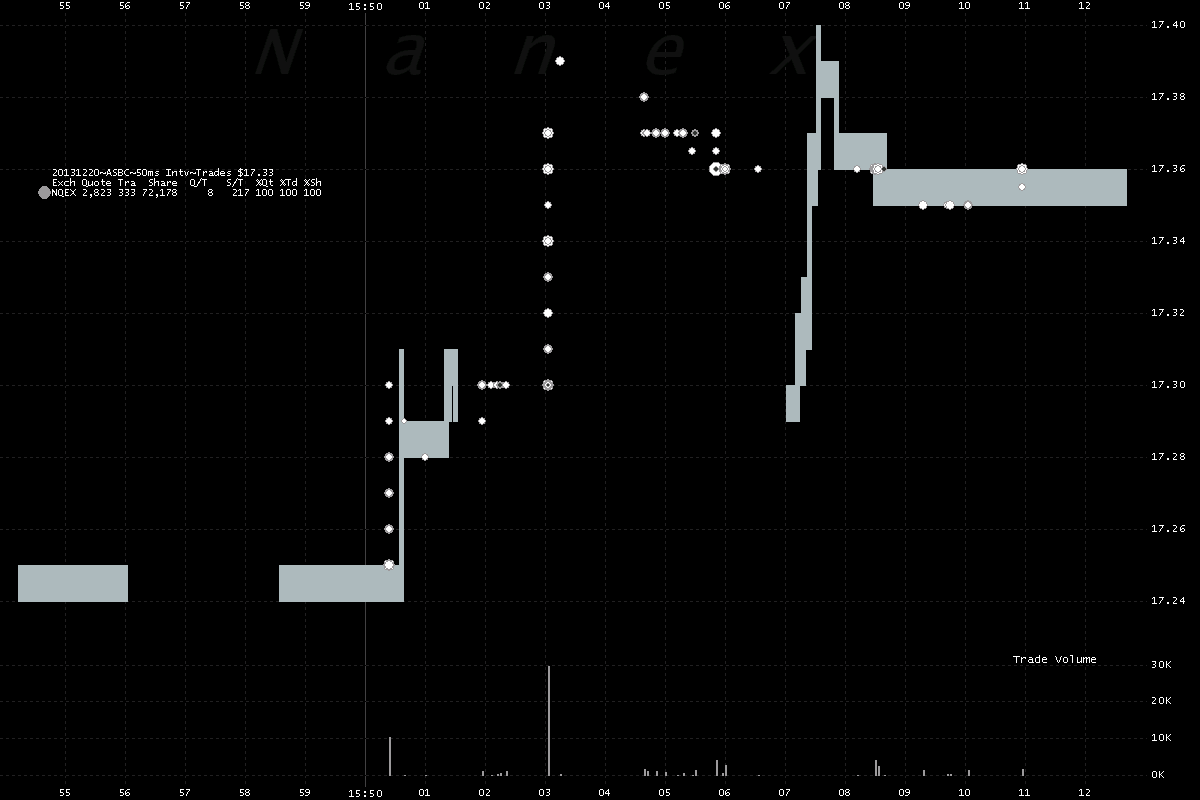
2b. ASBC - trades and quotes from PACF (red) and Nasdaq (gray).
Note that Nasdaq trades and quotes lag behind those from PACF (NY-ARCA)
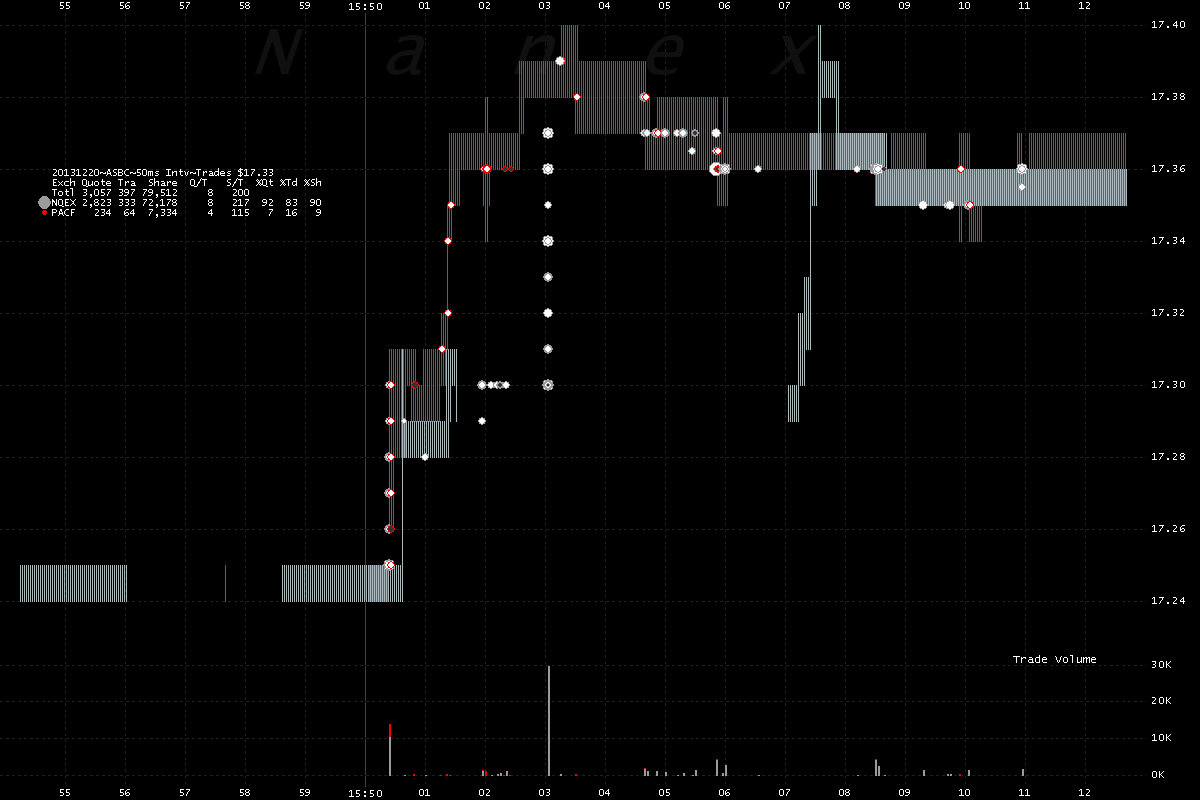
2c. ASBC - Zooming in on Chart 2b.
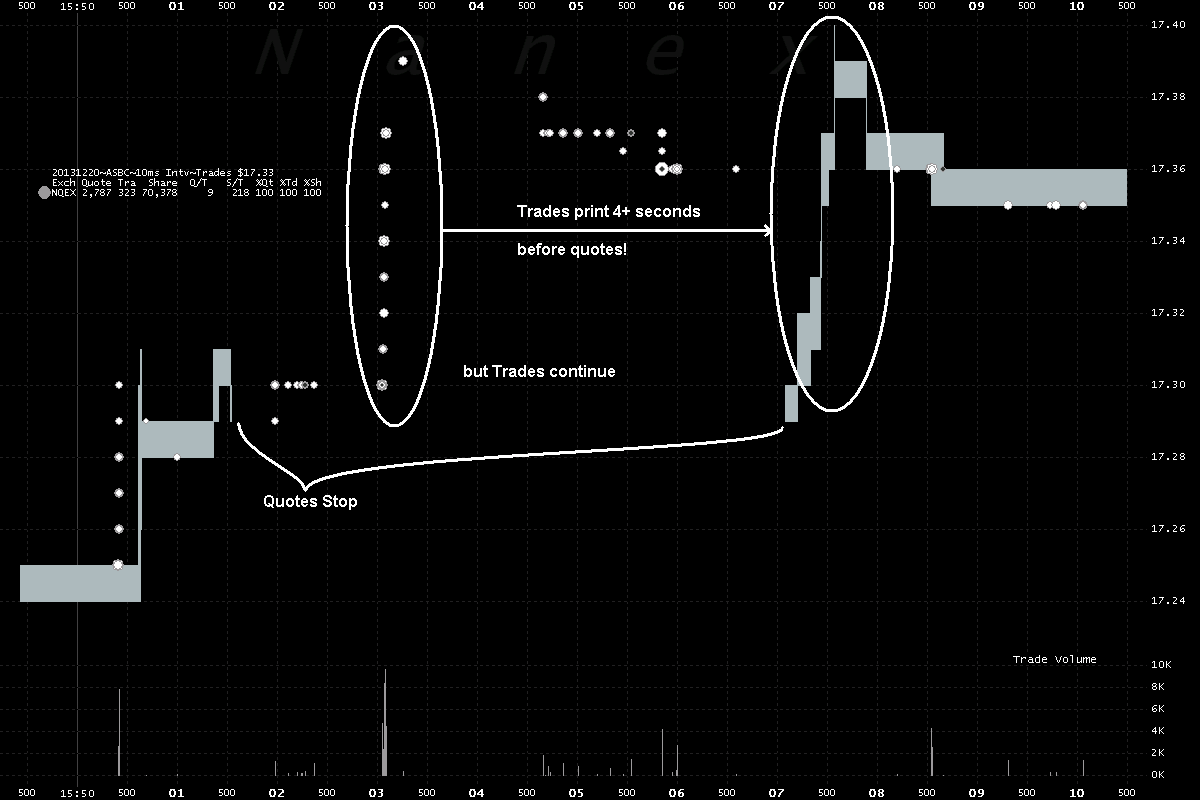
2d. ASBC - Trades from all exchanges and NBBO (shaded gray for normal, red for
crossed).
The NBBO is crossed because of the stale offer (ask price) from Nasdaq is lower than
bids from other exchanges.
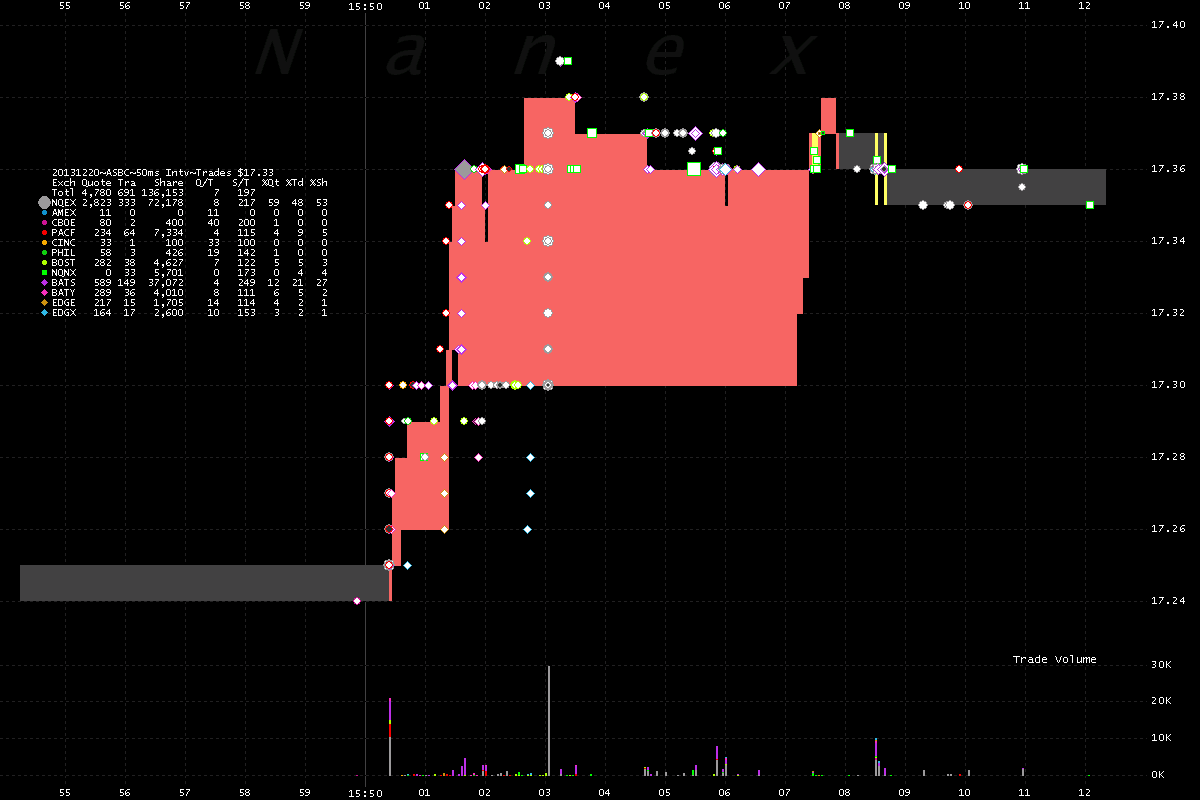
Nanex Research
Inquiries: pr@nanex.net









